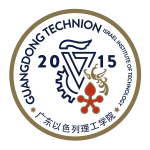
Cheng Zhu
Associate Professor, Materials Science and Engineering Program
Office: R529, North Campus
Dr. Cheng Zhu obtained his Bachelor’s degree in Polymer Science and Engineering (2014) and Ph.D. in Chemistry (2019) from Soochow University. Then he worked as a postdoctoral research associate at the University of Colorado Boulder from 2019 to 2023. In addition, he was appointed “BASF research scholar” during 2022 to 2023 in collaboration with BASF SE, Germany. In May 2024, he joined GTIIT as an associate professor in the program of Materials Science and Engineering. He has accumulated expertise in Carbon quantum dot, catalysis and energy conversion, novel anti-corrosion technology, and molecular dynamics simulations. Up to now, he has published >40 papers at renowned journals, including Science Advances, PNAS, Advanced Materials, Nature Catalysis, ACS Nano, ACS Catalysis, Applied Catalysis B: Environmental et al. His total citation is over 2600 with an H-index of 31.
Prof. Cheng Zhu is now leading a research group at GTIIT. With a combination of both experimental and computational simulation methods, his group is dedicated to designing high-performance nanostructures as next-generation materials in the following applications: (1) multifunctional carbon-based quantum dots, (2) photocatalysis and clean energy, (3) multifunctional polymer-nanocomposite, (4) environmentally friendly metal corrosion protection coating, (5) polymer recycling and conversion, and (6) biomaterials design guided by molecular dynamics simulations.
- Carbon quantum dot
- Nanocatalysts
- Clean energy production
- Multifunctional coatings
- Molecular dynamics simulations
C. Zhu, S. E. Hoff, H. Heinz*, Prediction of metal-organic interactions and molecular assembly in extreme accuracy and speed. ACS Nano 2023, 17, 11, 9938–9952
C. Zhu, Y. Fu, C. Liu, Y. Liu*, L. Hu, J. Liu, I. Bello, H. Li, N. Liu, S. Guo, H. Huang, Y. Lifshitz*, S.T. Lee*, Z. Kang*, Carbon dots as fillers inducing healing/self-healing and anticorrosion properties in polymers, Adv. Mater., 2017, 29, 1701399.
C. Zhu, C. Liu, Y. Zhou, Y. Fu, S. Guo, H. Li, S. Zhao, H. Huang*, Y. Liu*, Z. Kang*, Carbon dots enhance the stability of CdS for visible-light-driven overall water splitting, Appl. Catal. B: Environ., 2017, 216, 114–121.
C. Zhu, M. Zhu, Y. Sun, Y. Zhou, H. Huang, Y. Lifshitz, S.T. Lee, J. Zhong*, Y. Liu*, Z. Kang*, Defects induced efficient overall water splitting on a carbon-based metal free photocatalyst, Appl. Catal. B: Environ., 2018, 237, 166–174.
C. Zhu,§ C. Liu,§ Y. Fu, J. Gao, H. Huang*, Y. Liu*, Z. Kang*, Construction of CDs/CdS photocatalysts for stable and efficient hydrogen production in water and seawater, Appl. Catal. B: Environ., 2019, 242, 178-185.
C. Zhu, M. Zhu, Y. Sun, Y. Zhou, J. Gao, H. Huang, Y. Liu*, Z. Kang*, Carbon-supported oxygen vacancy-rich Co3O4 for robust photocatalytic H2O2 production via coupled water oxidation and oxygen reduction reaction. ACS Appl. Energy Mater., 2019, 12, 8737–8746.
C. Zhu, H. Li, H. Wang, B. Yao, H. Huang*, Y. Liu*, Z. Kang*, Negatively charged carbon dots with bacteria resistance ability for high-performance anti-biofilm and anti-corrosion coating design. Small, 2019, 15, 1900007.
M. Zhu,§ C. Zhu,§ D. Wu, X. Wang, H. Wang, J. Gao, H. Huang*, C. Shi*, Y. Liu* and Z. Kang*, Efficient photocatalytic water splitting through titanium silicalite stabilized CoO nanodots. Nanoscale, 2019, 11, 15984–15990.
L. O. Mark,§ C. Zhu,§ J. W. Medlin, H. Heinz*, Understanding the surface reactivity of ligand-protected metal nanoparticles for biomass upgrading. ACS Catal., 2020, 10, 5462–5474. (Front Cover)
Y. Dou,§ C. Zhu,§ M. Zhu,§ Y. Fu, H. Wang, C. Shi*, H. Huang*, Y. Liu, Z. Kang. Highly mesoporous carbon nitride photocatalysts for efficient and stable overall water splitting. Appl. Surf. Sci., 2020, 509, 144706.
X. Wu,§ C. Zhu,§ L. Wang, S. Guo, Y. Zhang, H. Li, H. Huang*, Y. Liu*, J. Tang*, Z. Kang*, Control strategy on two-/four-electron pathway of water splitting by multi-doped carbon-based catalysts. ACS Catal., 2017, 7, 1637-1645.
S. Akkineni, C. Zhu, J. Chen, M. Song, S. Hoff, J. Bonde, J. Tao*, H. Heinz*, S. Habelitz*, J. De Yoreo*, Amyloid-like amelogenin nanoribbons template mineralization via a low energy interface of ion binding sites. Proc. Natl. Acad. Sci. U.S.A., 2022, 119 (19) e2106965119.
X. Shao, C. Zhu, P. Kumar, J. Lu, M. Cha, Y. Lin, Y. Cao, X. Mao, H. Heinz*, N. A. Kotov*, Chiral deformations and photonic effects for ion intercalation of ceramic nanoparticles. Adv. Mater., 2023, 2206956. (Inside Cover)
S. Guo, S. Zhao, X. Wu, H. Li, Y. Zhou, C. Zhu, N. Yang, X. Jiang*, J. Gao, L. Bai, Y. Liu*, Y. Lifshitz*, S.T. Lee, Z. Kang*, A Co3O4-CDots-C3N4 three component electrocatalyst design concept for efficient and tunable CO2 reduction to syngas, Nat. Commun., 2018, 8, 1828.
D. Liu, Y. Liu, P. Huang, C. Zhu, Z. Kang, J. Shu, M. Chen, X. Zhu, J. Guo, L. Zhuge, X. Bu, P. Feng*, T. Wu*, Highly tunable heterojunctions from multi-metallic sulfide nanoparticles and silver nanowires, Angew. Chem. Int. Ed., 2018, 57, 5374–5378.
Y. Fu, C. Liu, M. Zhang, C. Zhu, H. Li, H. Wang, Y. Song, H. Huang*, Y. Liu*, Z. Kang*, Photocatalytic H2O2 and H2 Generation from living chlorella vulgaris and carbon micro particle comodified g-C3N4. Adv. Energy Mater., 2018, 1802525.
N. Liu, M. Han, Y. Sun, C. Zhu, Y. Zhou, Y. Zhang, H. Huang, V. Kremnican, Y. Liu*, Y. Lifshitz*, Z. Kang*, A g-C3N4 based photoelectrochemical cell using O2/H2O redox couples, Energy Environ. Sci., 2018, 11, 1841-1847.
